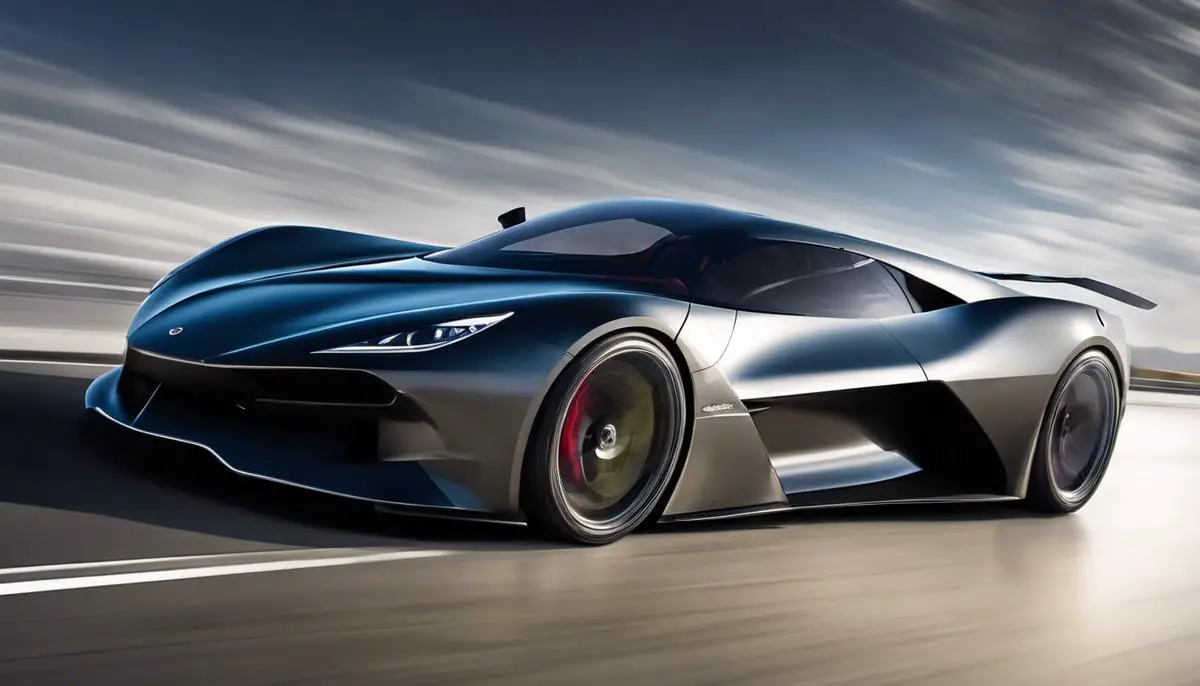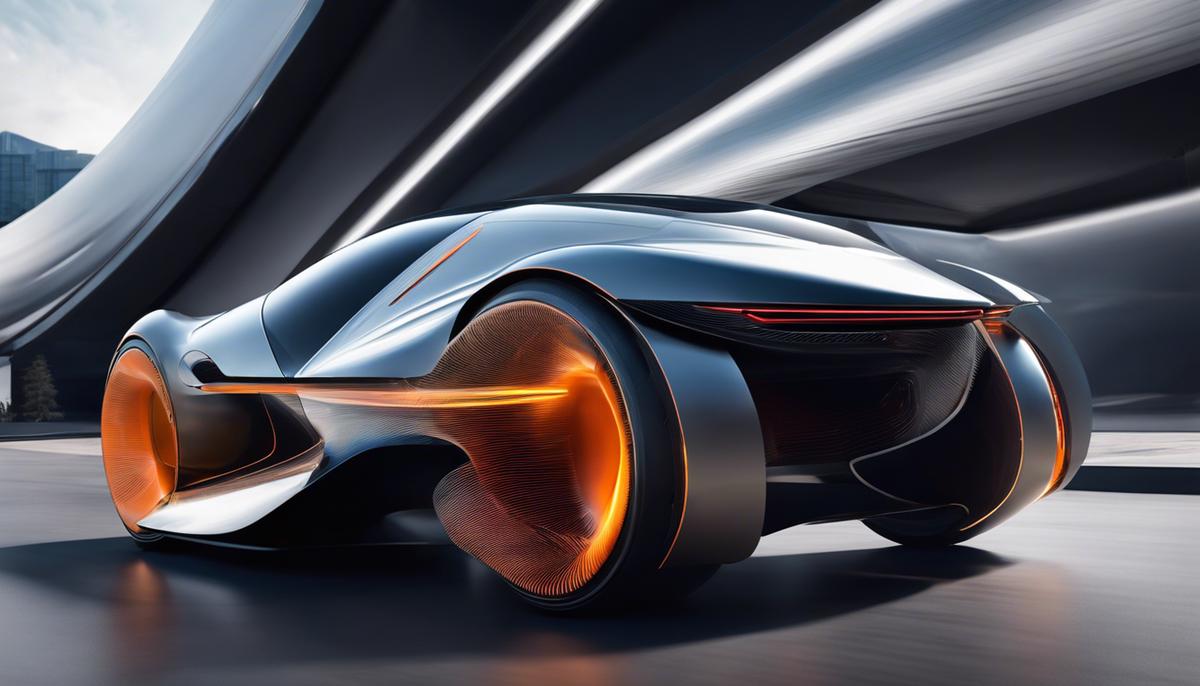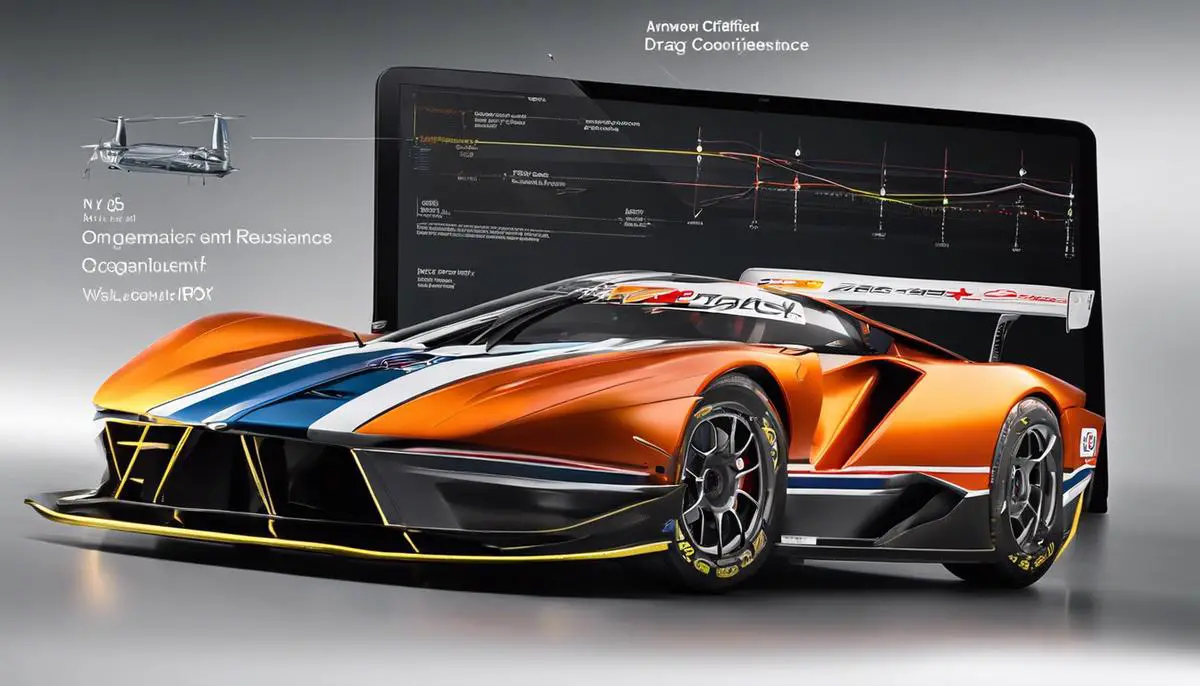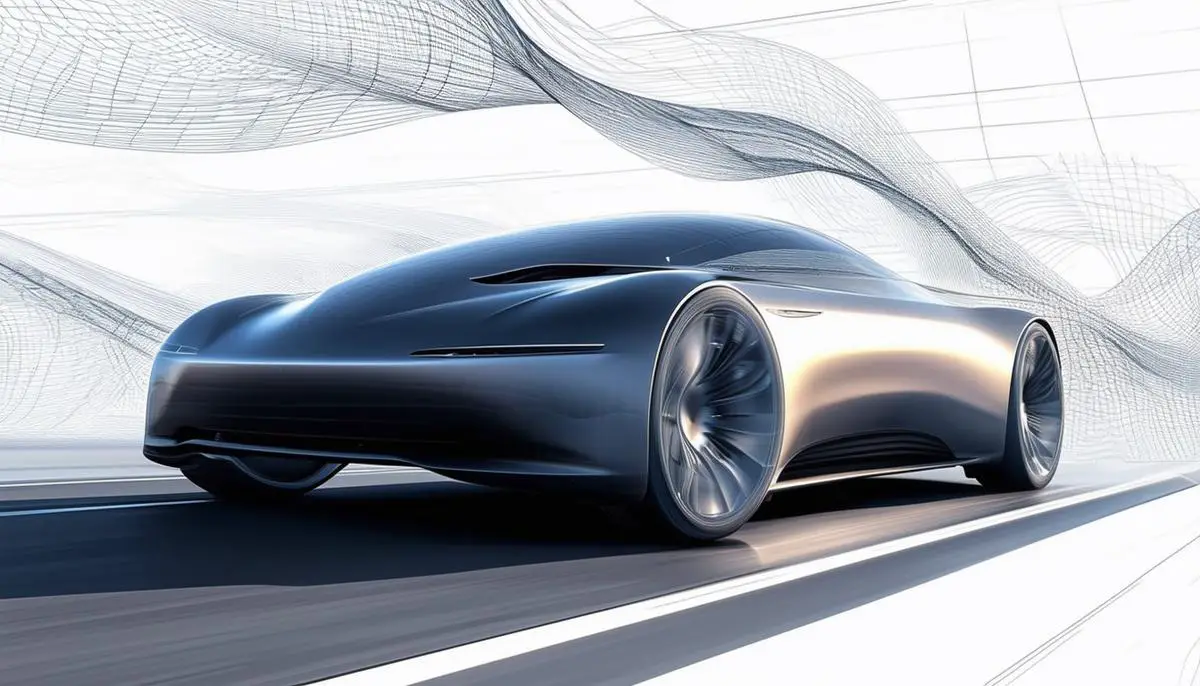The quest for reducing air resistance has long been a driving force in the evolution of car design. At the heart of this pursuit lies the concept of drag coefficient, a critical factor that shapes the dynamics of how vehicles slice through the atmosphere. Understanding the nuances of drag coefficient is essential not only for automotive engineers but also for the general public who seek to comprehend the intricate dance between form, function, and physics. In this exploration, we will dissect the importance of drag coefficient in vehicle aerodynamics, unveiling its profound influence on fuel efficiency, speed, and the overall driving experience. As we navigate through the fluid world of air currents and resistance, we illuminate the path that leads to vehicular elegance and performance refinement.
Contents
Understanding Drag Coefficient
Drag Coefficient Uncovered: What It Is and Why It’s a Big Deal for Cars
Have you ever stuck your hand out of the car window while cruising down the highway and felt that push back? That’s air resistance in action. It’s not just a fun sensation; it’s a big deal when it comes to understanding cars, especially if we’re talking about how they slice through the air. This is where the term “drag coefficient” speeds into the conversation. Let’s dive into what it is and why it’s super important for your ride.
So, what’s this drag coefficient thing? Imagine you’re a superhero with the power to see tiny air particles. As a car zips along, these tiny particles hit it like a gazillion microscopic ping-pong balls. Some cars, like sports cars, are shaped to let these little guys slide off without much fuss. But boxier ones, like your typical delivery van, face a tougher time.
Now, the drag coefficient, or Cd, is the sciencey way to measure how easily a car can get those air particles to go easy on it. It’s a number that tells us how aerodynamic a car is. The lower the Cd, like maybe around 0.25, the less air resistance the car deals with. Higher Cd numbers, say around 0.40, mean more wind buffet and more power needed to move.
Why should we care? Well, getting all those air particles to play nice not only makes for a smoother ride but can save you cash at the gas pump too. Lower drag means the engine doesn’t have to work as hard, which means less fuel burned. And that’s not all – cars with low drag coefficients are also quieter and handle better.
From muscle cars to mini-vans, designers are all about shaving off points from that Cd number. They tweak shapes, add fancy spoilers, and smooth out edges. It’s all about getting that perfect flow of air that lets the car zip along without a ton of pushback.
So the next time you admire a sleek-looking car or hear someone chatting about miles per gallon, remember the drag coefficient. It’s the unsung hero of car efficiency and a key player in getting the most zoom for your vroom.

Influence of Drag on Vehicle Performance
When it comes to a car zooming down the road or a racer tearing up the track, the drag coefficient isn’t just some fancy number to throw around—it’s a real game-changer. The more we understand it, the clearer it becomes why automakers sweat over those sleek designs.
Imagine the car as a swimmer slicing through water. In the sea of air we call our atmosphere, a higher drag coefficient is like wearing baggy swim trunks that balloon out, catching all that water—or in this case, air. When a car faces strong air resistance, the engine has to push harder simply to maintain speed, let alone accelerate.
With acceleration, every extra bit of drag can feel like a weight tied to the back bumper. A high drag coefficient means the car needs more oomph to overcome air resistance. Conversely, a lower drag coefficient is akin to swapping those baggy trunks for something more hydrodynamic. The engine can work less on fighting air and more on getting from A to B quickly.
Now, press the pedal to the metal and gun for the top speed—the drag coefficient rears its head again. High-speed driving amplifies the effects of air resistance, and that’s where the drag coefficient determines if the car is a hare or a tortoise. The lower the drag coefficient, the closer the car gets to its maximum potential speed.
This isn’t just about speed-crazed adrenaline junkies either. For everyday drivers, that resistance at high speeds can mean choosing between getting to your destination sooner and burning a whole lot more gas. A car with a trimmer drag cuts through air like a hot knife through butter, hitting top speeds without guzzling fuel.
So, next time you see a car boasting a low drag coefficient, remember: it’s more than just numbers. It’s about making every drop of fuel count, every acceleration smoother, and every top speed faster without working the engine to the bone. It’s the not-so-secret ingredient for a set of wheels that’s as efficient as it is exhilarating to drive.

Photo by chuttersnap on Unsplash
Designing Cars for Optimal Aerodynamics
Curious about more ways to cut down the drag on your car? Buckle up! Designing for low drag isn’t just about sleek shapes and cool spoilers. There’s science and a hint of genius behind it too.
Diving deeper into this realm, optimizing tire design and pressure is a huge deal. Picture this: tires that bulge out create more air resistance. So, designers aim for tires that are just the right width, not too wide, to slice through the air, and they keep them inflated just right for less drag.
Now, let’s take a peek under the car. Flat underbodies are a trick up a car designer’s sleeve. It’s like ironing your shirt for a neat look—flatten the bottom of a car, and air swooshes under without creating a ruckus.
Ever heard of side skirts and air dams? These are not just for flashy looks—they guide the air smoothly around and under the car. It’s like a dance, where every step is choreographed to avoid any awkward movements.
Mirrors matter too! No, not for checking out how cool one looks, but for their shape. Small and well-contoured mirrors disturb the air less. Less disturbance equals less drag. Simple, right?
Let’s not forget about all the gaps and seams between car parts. These are kind of like the bits of food that get stuck in your teeth—annoying and messy. Sealing them up makes everything smoother, so air slides over the car instead of getting stuck.
Okay, so we talked about design, but what about the materials? Lightweight materials like carbon fiber are a big thumbs up. Lighter cars need less muscle to move, which means they can slip through the air easier, putting less strain on the engine.
One last pro tip: paint jobs do more than just look snazzy. A good paint job can be as smooth as glass and nearly invisible to air. Who would have thought that tiny bumps from bad paint could cause more drag?
So that’s the scoop on cutting down drag. It’s all about finding harmony with the air—a dance of shapes, materials, and smoothness, creating cars that are as pleased to move through the wind as a hot knife through butter. No fluff, no excess—just smart, savvy design keeping cars swift and efficient. Keep it sleek, folks!

Real-World Applications and Case Studies
When car enthusiasts dive into the world of sleek and efficient driving machines, certain marques and models stand out for their mastery of aerodynamics. These are the vehicles where the meticulous efforts in streamlining every curve and edge have paid dividends in performance, fuel economy, and even a touch of silence as they slice through the air.
Let’s take a glance at some shining examples that have set benchmarks by achieving impressively low drag coefficients. These cars have benefited from all the aerodynamic tricks in the book and even written some new chapters of their own.
One of the stars in this aerodynamic show is the Tesla Model S, particularly its latest iterations. Its silhouette is honed to an almost teardrop shape, which is the natural go-to when it comes to cheating the wind. With door handles that retract flush against the body and without the need for a grille as in traditional combustion-engine cars, the Model S achieves a low drag coefficient. Its efficiency figures are testimony to this design philosophy, enabling greater range on a single charge.
Another exemplary contender is the Mercedes-Benz CLA-Class, especially the CLA 250. It takes the notion of aerodynamically efficient design and runs with it, featuring a tapered rear section that minimizes turbulence. Enthusiasts appreciate this approach because it not only reduces drag but also stabilizes the vehicle at higher speeds, thus connecting them to the road with confidence and efficiency.
For an icon that has rippled through the waters of automotive excellence, the Toyota Prius requires no introduction. It might not be the sportscar on everyone’s poster, but it has quietly commanded respect for its aerodynamic design. With its quintessential Kammback tail and thoughtfully smoothed contours, the Prius achieves exceptional fuel economy numbers, directly attributing to its low drag coefficient.
Moreover, cars like the Audi A4 quietly demonstrate the impact of low drag on luxury sedans. The automaker’s dedication is reflected in the A4’s subdued yet strategic styling, where side mirrors, underbody cladding, and even the subtle creases in the bodywork are all designed with aerodynamics in mind. The result is a smoother, quieter ride that’s gentle on the fuel tank too.
Over and above individual cars, this aerodynamic pursuit has proven that whether it’s a high-performance sports coupe or an everyday sedan or hatchback, a low drag coefficient can translate to a range of benefits. More miles per gallon, less wind noise, and a lighter ecological footprint are why car lovers and environmental enthusiasts alike tip their hats to these feats of engineering.
The upshot here is crystal clear: Vehicles that put a premium on aerodynamics not only look futuristic, they also tap into the future of car efficiency. As this discipline of car design evolves, we can expect to see even more models adopting the sleek shapes and hidden innovations that make low drag coefficients a crowning achievement in automotive prowess. Whether you’re gunning down the open highway or navigating the urban jungle, the best examples of low drag coefficient cars offer a blend of aesthetics and performance that’s hard to beat.

The Future of Aerodynamics in Car Design
Shifting gears a bit, let’s dive into some futuristic trends in the world of car aerodynamics that are bound to rev up the potential of speed and efficiency even further. Hold onto your hats because these innovations are not just blowing hot air; they’re about to transform the way cars slice through the wind on the open road.
First up on the horizon is active aerodynamics. Picture this: parts of a car that can change shape while you’re driving! It’s like having a car that breaths in and puffs out its chest based on speed and conditions. Active aerodynamic elements—like adaptive spoilers and vents—can help the car stay stable at high speeds and reduce drag when coasting.
Another trend that is picking up speed is the use of advanced computational fluid dynamics (CFD) in car design. With super-smart computer programs, designers can model how air flows over a virtual car. This tech allows them to tweak designs in a digital world, taking out the guesswork and saving tons of time and money.
Electrification of vehicles isn’t just about ditching gas; it plays a big role in aerodynamics too. Since electric cars don’t need big grilles for air to cool the engine, designers can smooth out the front end. This helps cut down on air resistance big time, paving the way for sleeker, more wind-cheating shapes.
Don’t overlook the role of wheel covers either. They may seem like a small detail but covering up those spinning rims reduces the turbulence they can create. The smoother the flow of air around a vehicle, the less power it needs to zip down the street.
And then there’s the concept of biomimicry—borrowing design ideas from nature. Fish and birds have been dealing with drag for millions of years. By studying their shapes and skin textures, engineers hope to develop new, natural ways to let cars glide more effortlessly through the air.
Lastly, materials science is kicking into high gear. Imagine a car with a skin that can change on the fly, getting dimpled like a golf ball to reduce drag at the flick of a switch. Sound like science fiction? Maybe, but researchers are on it, experimenting with materials that can alter their texture in real-time.
The future of car aerodynamics is looking as slick as the designs soon to hit the road, combining technology and innovation for greener, swifter rides. This is thrilling stuff for any car enthusiast – watching our trusty steel steeds evolve into sleek, fuel-sipping, wind-whistling road runners of the future. From smart spoilers to fishy physics, the journey ahead in car design promises to cut through the air with precision and flair. Get ready to go with the flow – aerodynamics is about to get a whole lot cooler.

From the sleek profile of a sports car to the sturdy lines of a family sedan, the role of aerodynamics remains paramount in modern car design. We have journeyed through a landscape where the forces of drag are constantly at play, shaping not only the speed and efficiency of our vehicles but also the future of automotive engineering. As we stand on the precipice of innovation, the relentless pursuit of lower drag coefficients continues to propel the industry forward. Embracing new materials, computational prowess, and visionary designs, we are steering towards a horizon where cars do not merely travel but glide effortlessly through ever-changing streams of air. The transformative power of reducing drag is evident, cementing its place as an indispensable facet in the pursuit of the next zenith in automotive design.



